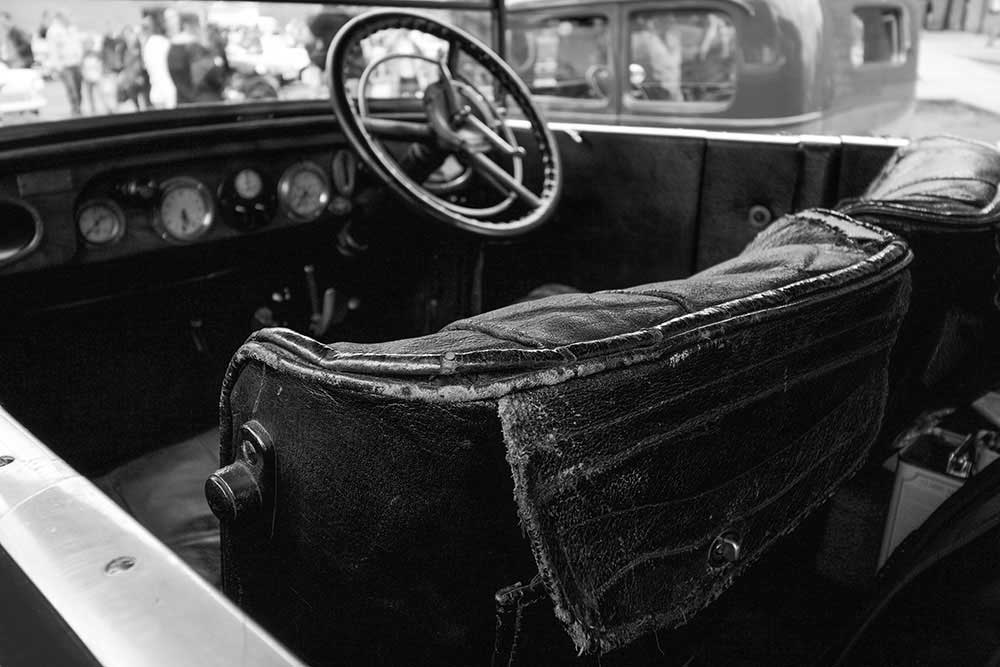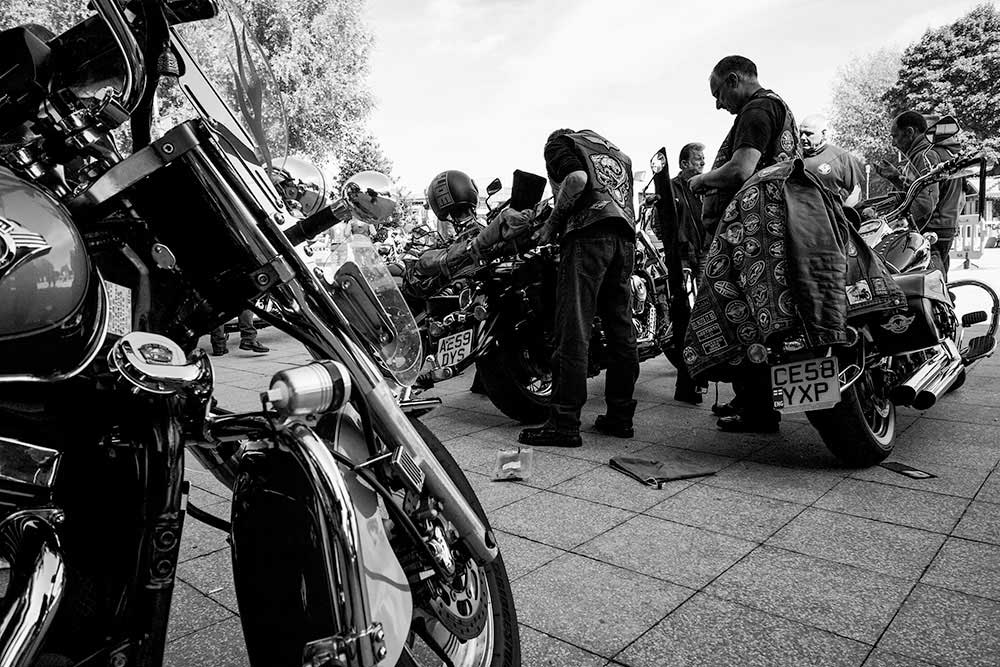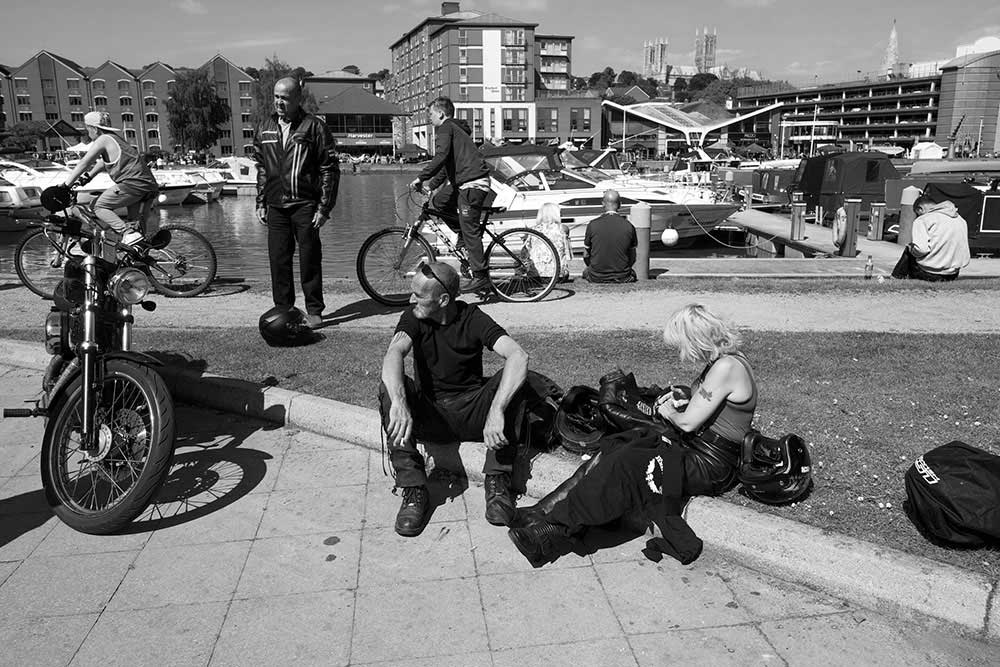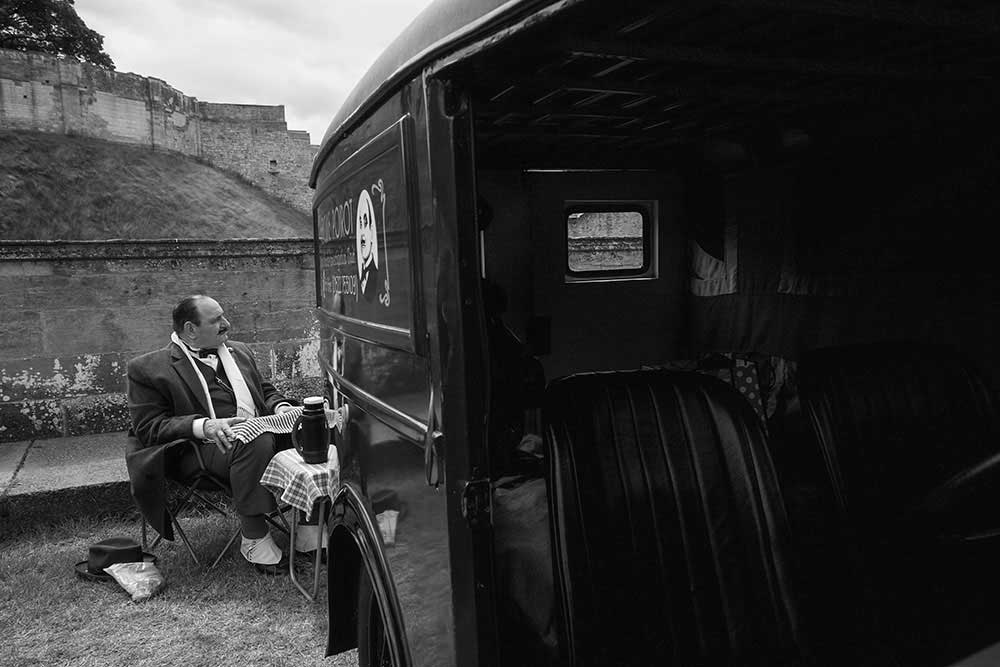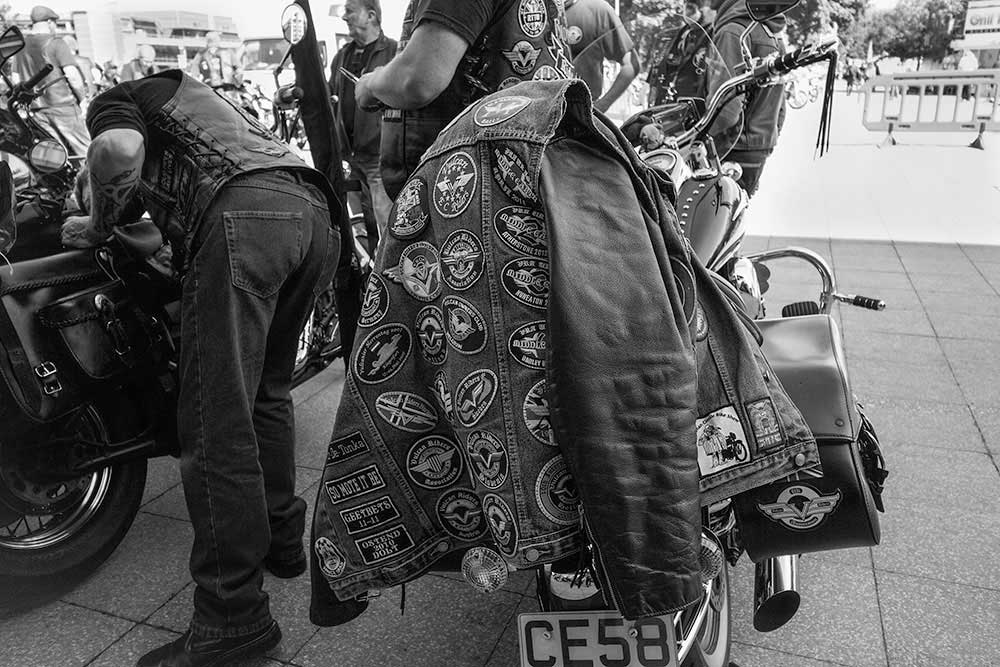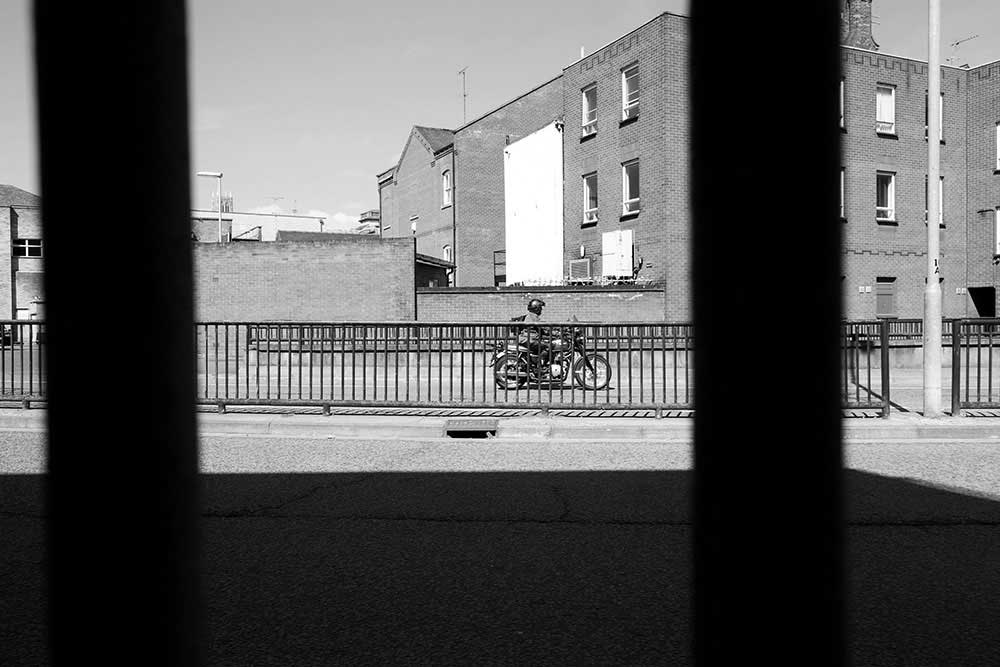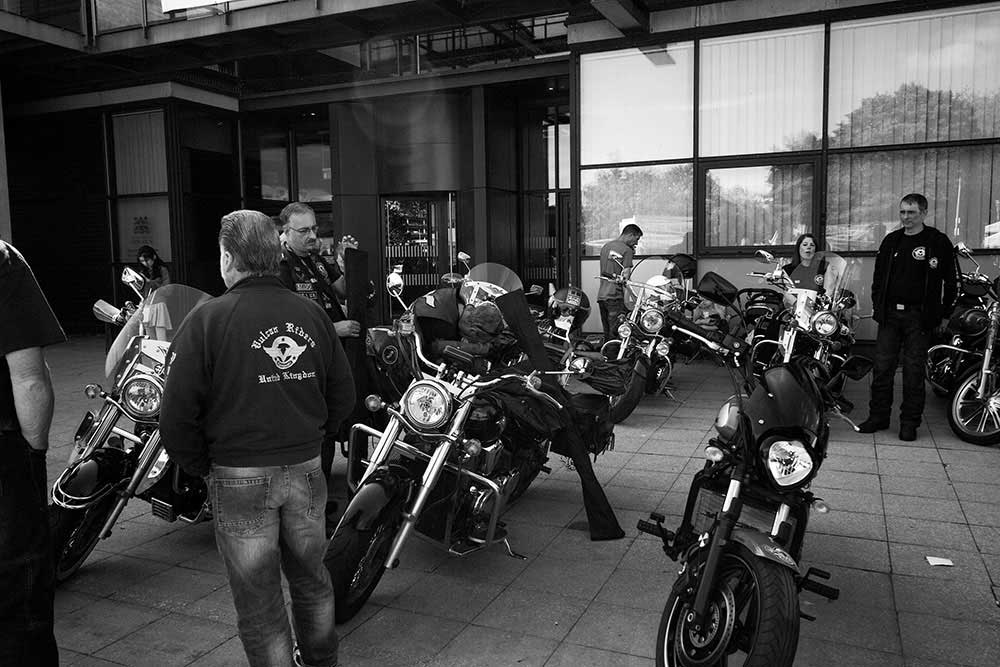Spotting the coolest guy sitting down and smoking a cigarette, while looking at something to the side compelled me to capture the image ‘Looking West’.
Various biker gangs and their beautiful machines stopped in Lincoln and stayed the day, while I travelled round and took various photographs of their activities I noticed specific comparisons between the bikers and the owners of the cars.
I therefore decided to create a project which reflected the characteristics of the owners of said machines, or my interpretation of their personalities. The image ‘Vanilla’, for example. Was taken because the car reminded me of something that might be driven by a villain or an owner who might have a darker side to his character. This is hence fourth solidified by titling one of my images ‘the Phantom menace’. My project can be therefore seen as a sort of dual, between bikes and cars. However more so, it’s a project that deals with the duality of characteristics between the owners of different vehicles. The bikers being the stereotypical cool guys and grease monkeys. While the car owners seemed far more interested in the aesthetics of their machines and telling the stories of their past.
About Francesco Scalici
Francesco Scalici is currently on an MA course at the University of Lincoln. His work focuses on highlighting a relationship between himself and his subject matter and translating this into his imagery. His main photographic work is concentrated around capturing people and documentary photography. However, leading up to this process, Francesco’s interests stem from film. Previously focusing on director ‘Victor Erice’, and his notion of capturing the raw processes of things, and more recently photographer ‘Bruce Gilden’, who’s images contain cinematic qualities. Is what eventually fed into Francesco’s interests in capturing relationships between subject matters and acknowledging the beauty in photographing something which is raw, rather than staged. His most recent project ‘Biker’s and Automobiles’, attempts to capture the personalities of the proprietors of each machine, by eliminating in most images the owners themselves, and focusing on capturing the raw power of these objects.
